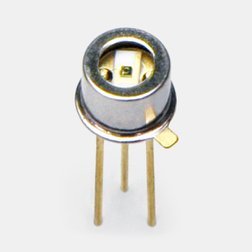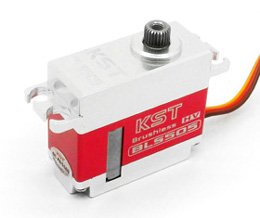In fields such as medical imaging, particle physics, and LiDAR, high-sensitivity photodetectors are pivotal technologies. Among these, MPPC (Multi-Pixel Photon Counter) and SiPM (Silicon Photomultiplier) stand out as revolutionary devices, renowned for their exceptional performance. Hamamatsu Photonics, a global leader in optoelectronics based in Japan, has solidified its market dominance with cutting-edge MPPC products.
What is MPPC (SiPM)?
MPPC (Multi-Pixel Photon Counter) and SiPM (Silicon Photomultiplier) are fundamentally the same technology, differing only in naming conventions. These devices consist of an array of thousands of micro-sized avalanche photodiodes (APDs), each operating in Geiger mode, enabling single-photon-level detection.
Core Advantages:
- Ultra-High Sensitivity: Detects weak light signals, even single photons.
- Rapid Response: Nanosecond-level response time, ideal for dynamic applications.
- Robustness: Stable performance in harsh environments (e.g., magnetic fields, radiation).
- Compact Design: Small footprint for easy integration into diverse systems.
The structures of SPAD and MPPC are shown below.
SPAD is configured with one pixel, in which a Geiger mode APD and a Quenching resistor are combined as one set. MPPC is configured with a plurality of pixels, in which said SPADs are arranged in plural numbers and electrically connected in parallel.


How to estimate the number of photons detected by the MPPC?
When light enters an MPPC at a particular timing, its output pulse height varies depending on the number of photons detected. Figure shows output pulses from the MPPC obtained when it was illuminated with the pulsed light at photon counting levels and then amplified with a linear amplifier and observed on an oscilloscope. As can be seen from the figure, the pulses are separated from each other according to the number of detected photons such as one, two, three photons and so on. Measuring the height of each pulse allows estimating the number of detected photons.

The distribution of the number of photons detected during a particular period can be estimated by measuring the MPPC output charge using a charge amplifier or similar device. Figure shows a distribution obtained by discriminating the accumulated charge amount. Each peak from the left corresponds to the pedestal, one photon, two photons, three photons and so on. Since the MPPC gain is high enough to produce a large amount of output charge, the distribution can show discrete peaks according to the number of detected photons.

How to use?
The MPPC characteristics greatly vary depending on the operating voltage and ambient temperature. In general, raising the operating voltage increases the electric field inside the MPPC and so improves the gain, photon detection efficiency, and time resolution. On the other hand, this also increases unwanted components such as dark count, afterpulses, and crosstalk which lower the S/N. The operating voltage must be carefully set in order to obtain the desired characteristics.
The MPPC can be used by various methods according to the application. Here we introduce a typical method for observing light pulses. Using a wide-band amplifier and oscilloscope makes this measurement easy. Figure shows one example of a connection to a wide-band amplifier. The 1 kΩ resistor and 0.1 μF capacitor on the power supply portion serve as a low-pass filter that eliminates high-frequency noise of the power supply. The 1 kΩ resistor is also a protective resistor against excessive current.
The MPPC itself is a low-light-level detector, however, in cases where a large amount of light enters the MPPC, for example, when it is coupled to a scintillator to detect radiation, a large current flows into the MPPC. This may cause a significant voltage drop across the protective resistor, so the protective resistor value must be carefully selected according to the application. The amplifier should be connected as close to the MPPC as possible.

Hamamatsu Photonics: Leading the MPPC Revolution
With decades of expertise in optoelectronics, Hamamatsu Photonics has become synonymous with high reliability and customization in MPPC technology. Below are highlights of its top-selling series:
1. S13360 Series
- Key Features: High photon detection efficiency (PDE > 40%), low dark count rate, optimized for low-light conditions.
- Applications: Bioluminescence detection, radiation monitoring.
2. S14160 Series
- Innovation: Large-area sensors (6×6 mm²) with 30% wider dynamic range, tailored for high-energy physics experiments.
- Use Case: Particle detectors at CERN (European Organization for Nuclear Research).
3. C-Series (e.g., C13365)
- Breakthrough: Built-in temperature compensation circuits eliminate thermal drift.
- Applications: Automotive LiDAR, drone navigation systems.
Why Hamamatsu MPPC Dominates the Market
Technological Edge:
- Microstructure Optimization: Proprietary “trench isolation” technology minimizes crosstalk and enhances signal-to-noise ratio.
- Custom Solutions: Tailored designs in pixel density, packaging, and spectral response for R&D and industrial needs.
Industry Recognition:
- Medical Sector: Over 70% of global PET-CT systems use Hamamatsu MPPCs for precise tumor imaging.
- Scientific Collaboration: Contributions to Japan’s Super-Kamiokande detector upgrade for neutrino research.
Future Prospects
As quantum communication and autonomous driving advance, Hamamatsu continues to innovate. The latest S15660 Series achieves 50% PDE and supports 3D-stacked packaging, paving the way for next-gen LiDAR and quantum computing.
MPPC (SiPM) technology is redefining the boundaries of photodetection, and Hamamatsu Photonics stands as a “hidden champion” through relentless innovation and market insight. Whether in scientific research or industrial applications, Hamamatsu’s MPPC products epitomize efficiency and reliability. For inquiries or samples, visit Hamamatsu’s official website or contact their global technical support team.Exploring the Limits of Light, Hamamatsu Partners with You.
For more information or to purchase Hamamatsu products, please contact us:emi-ic.com
























